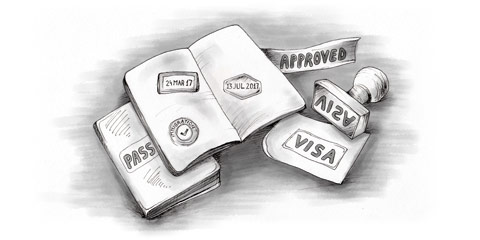Category F, M and J
(F) Academic or language school students
International students who are accepted to a full-time academic program or an English Language Program at a US college or university can be granted an F visa.
Before applying for a student visa, you need a letter of acceptance from a school approved by the Student and Exchange Visitor Program (SEVP). Once accepted you will have to go through these steps in order to obtain a visa:
- You will be required to pay the SEVIS fee in order to be enrolled in the Student Exchange Visitor Information System (SEVIS), this can be around $220 to $350, visa dependent
- Your school will provide you with a form I-20 that will be presented to the consular officer when you attend your interview, which will determine if you are qualified to receive an F student visa
- In the end you might have to pay a visa issuance fee
(M) Non-academic students
The M visa is for recognised non-academic or vocational studies such as cooking classes, flight school or technical courses.
As with the F visa, you will first have to be accepted by the SEVP institution . After you are accepted, you will be registered at the SEVIS. You will receive a form I-20, Certificate of Eligibility for Nonimmigrant student status after an interview.
(J) Exchange visitors
Category J visas are also known as working holiday visas. This type of visa allows you to come to the US as part of a sponsorship program to study or work. You can come to the US with a J visa if you plan to fulfill roles such as being a:
- Trainee
- Au pair
- Intern
- Camp counselor
- International visitor
- Teacher
It’s absolutely necessary to find a sponsor before applying for a J visa and many organizations which require this kind of work will support your application. After filing the DS-160 form online, the application follows the same procedure as the M and F visas.
More information about the different types of visas can be found on the US Department of State website. When applying for a visa, make sure you are doing so through an official government website, as there are many websites that scam you into paying for a visa without ever receiving one.

